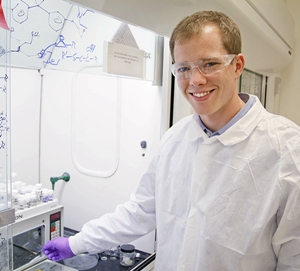13 May 2014. Engineers and material scientists from University of Texas in Dallas and University of Tokyo in Japan developed electronic circuits encased in polymers that become flexible and adapt their shape to three-dimensional objects when implanted in mammals. The team from the labs of Walter Voit in Dallas and Takao Someya in Tokyo published their findings online last month in the journal Advanced Materials (paid subscription required).
The researchers were seeking the ability to fabricate electronic circuits with common and inexpensive techniques that produce rigid components, but can still adapt to the shape and form of biological tissues when implanted in the body. “You need the device to be stiff at room temperature so the surgeon can implant the device,” says Dallas graduate student and first author Jonathan Reeder in a university statement, “but soft and flexible enough to wrap around 3-D objects so the body can behave exactly as it would without the device.”
The researchers worked with shape-shifting and softening polymers to produce these properties. Reeder, Someya, and others demonstrated last year the ability to devise flexible electronics with ultra-thin layers polymers and foils that could stretch and bend, yet retain their electronic properties.
In this latest project, the researchers extended those capabilities to adapt to a three-dimensional implanted environment. In this case, the team laminated and cured shape-memory polymers on the top layers of the components. While at room temperature the components remained rigid, they became soft and pliant when heated.
In their paper, the researchers heated circuits encased in shape-memory polymers to wrap around around thin cylinders, barely more than 2 millimeters in diameter, then implanted the devices in lab rats. The team found in tests the implanted circuits adapt to the shape of the tissue in the animals, while retaining their structural robustness and electrical properties.
Reeder notes this approach to flexible electronics is different from other current methods where the electronics may be flexible, but the properties remain the same despite the environment. “Our research,” says Reeder, “comes from a different angle and demonstrates that we can engineer a device to change shape in a more biologically compatible way.”
The researchers next plan to miniaturize the devices further and add more sensors to the circuits. The following brief (30 second) video demonstrates a circuit wrapping around a thin cylinder.
- Gecko-Inspired Adhesive Sticks to Wide Range of Materials
- Microparticle Solution Devised to Identify Genuine Goods
- Implanted Heart Membrane Device Created by 3-D Printer
- Artificial Muscle Created from Fishing Line, Thread Material
- Metal-Organic Framework Developed that Responds to UV Light
* * *


 RSS - Posts
RSS - Posts
You must be logged in to post a comment.